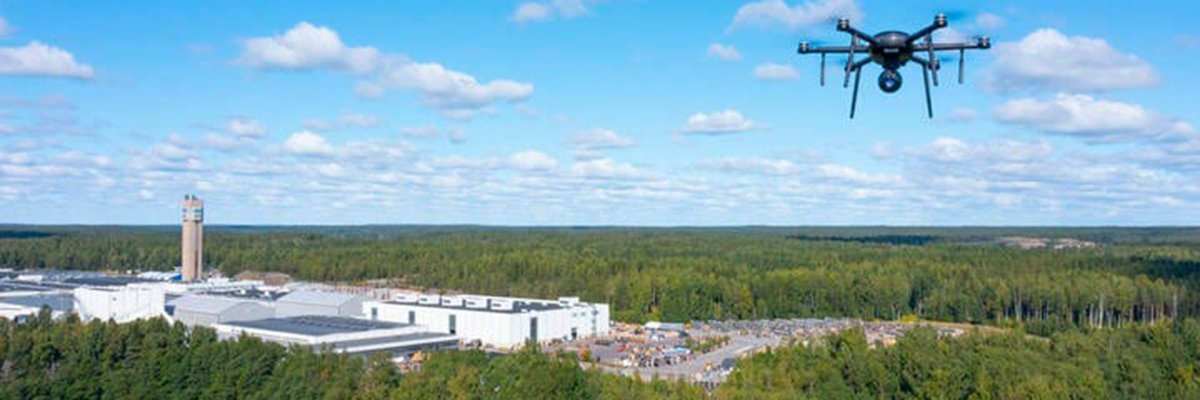The Civil Aviation Authority (CAA) has approved operational authority for independent drone advisor Drone Major to conduct the country’s first beyond visual line of sight (BVLOS) drone flights over the UK’s critical national infrastructure (CNI), such as the UK’s rail network in complex, built-up areas.
The approval was possible as a result of national rail transport infrastructure company Network Rail enabling and funding tests and trails designed to offer the potential to vastly improve the safety, speed and efficiency of the UK railway service – initially enabling long-range drones to patrol over the UK’s rail networks – while also delivering savings calculated to be in the region of many millions of pounds per year.
“We’re working with companies to make drone operations beyond visual line of sight a safe and everyday reality, contributing to the modernisation of UK airspace and enabling new technology into our skies,” said Sophie O’Sullivan, director of future of flight at the Civil Aviation Authority. “By supporting projects ranging from critical infrastructure inspections to consumer deliveries, we are gathering essential data to shape future policies and regulations and support the growth of the aerospace industry.”
The BVLOS drones will be able to operate in non-segregated airspace – that is airspace that allows all traffic, including both manned and unmanned aircraft, to operate under established procedures.
CAA authorisation also paves the way for possible imminent trials of the technology in partnership with Network Rail on a critical 12km route between Wolverhampton and Sandwell & Dudley Station in England’s West Midlands. Drone Major’s technology has already been tested along the rail corridor south-east of Wolverhampton station and the Severn Valley Railway lines, presenting an opportunity to significantly speed up the verification and interception of trespassers, thereby reducing delays to trains in a critical and very busy area, potentially also saving lives.
Flying over railways, the drones will operate in what is designated as a defined “safety corridor”, much like aeroplanes, using Drone Major’s Digital Tethering concept to assure the safety of the aircraft’s flight behaviour, minimising risks to those on the ground.
Digital Tethering has been designed to significantly improve safety and increase the efficiency of unmanned aircraft system operations during monitoring and inspection tasks. It employs a range of onboard navigation and safety systems as well as ground-based technology, to deliver what is said to be a “unique, cutting-edge” capability to the project and enabling reliable autonomous navigation, providing real-time and precise positioning of the drones, particularly in areas along the railway where GPS/GNSS signals are unstable or inaccessible.
The Digital Tethering service began in Wolverhampton before being trialled further afield to include tests, trials and surveys along the Severn Valley Railway. The drones were able to monitor the UK’s railways, transmitting visual data in real time to operators, providing detection and monitoring of trespassers.
Going forward, Drone Major plans to run additional trials with more CNI organisations in the near future, enabling more complex BVLOS operations across other areas of critical national infrastructure, with potential applications in sectors such as energy, utilities, defence, border management, and what Drone Major calls “sensitive” national infrastructure surveillance.
“The CAA’s approval of operational authority for trials of BVLOS flights marks a landmark moment for the drone industry,” said Drone Major Group founder and chief executive Robert Garbett.
“This milestone opens up new opportunities to unlock and transform the UK’s critical national infrastructure, especially in densely built environments where traditional methods often fall short. It sets a new benchmark for safety and efficiency, positioning the UK as a world leader in drone innovation while also unlocking innovation to support UK plc.”




